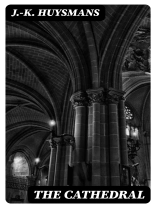In ‘The Cathedral, ‘ J.-K. Huysmans masterfully explores the intersection of faith, art, and the human experience through the lens of a Parisian church. The novel is a profound meditation on the spiritual significance of Gothic architecture, with rich, sensory descriptions that evoke the majesty of cathedrals as both physical structures and symbols of divine aspiration. Huysmans employs a unique literary style that blends impressionistic detail with philosophical reflection, situating his narrative within the broader context of 19th-century French naturalism and emerging modernist thought, which sought to examine the complexities of modern life and the quest for meaning. J.-K. Huysmans, a central figure in the Decadent movement, was deeply influenced by his own journey of faith and skepticism. His engagement with art, religion, and the aesthetics of beauty is prominently reflected in this work, stemming from his personal struggles with spirituality as he oscillated between agnosticism and belief. Huysmans’s own fascination with cathedrals was sparked by their ability to evoke both emotional and transcendental responses, leading him to articulate his thoughts through this richly layered narrative. ‘The Cathedral’ is a compelling read for those interested in the relationship between religion and artistic expression, as well as the broader themes of existential inquiry. Huysmans invites readers to immerse themselves in the tranquil yet complex atmosphere of sacred spaces, ultimately challenging them to contemplate their own beliefs and the significance of beauty in a world often marked by disillusionment.
Over de auteur
Joris-Karl Huysmans was a pivotal figure in French literature of the late 19th century, best known for his unique blend of naturalism and decadent writing. He was born on February 5, 1848, in Paris, France. Initially working as a civil servant, Huysmans began his literary career influenced by Emile Zola’s naturalism, vividly depicting the minutiae of everyday life. His early novels were characterized by a stark realism and keen social criticism, but gradually his work evolved, becoming increasingly symbolist and esoteric. He is perhaps most celebrated for his 1884 novel ‘Against Nature’ (‘À Rebours’), often considered the breviary of the Decadent movement, which detailed the eccentricities of an isolated aesthete and laid the groundwork for the Symbolist movement. ‘The Cathedral’, published in 1898, is another of Huysmans’ major works. The novel forms part of his ‘Durtal’ series, which traces the spiritual journey of the eponymous protagonist. It reflects Huysmans’ own conversion to Roman Catholicism and meditates on the nature of medieval architecture, reflecting an intertwining of material detail and spiritual inquiry. His later writing displays a marked departure from the earlier decadence, as he delves deeply into mysticism and explores the realms of religious experience. Huysmans died on May 12, 1907, leaving behind a literary legacy that would influence both the modernist and symbolist movements, as well as provide a vital cultural link between the naturalists and the avant-garde literary movements of the early 20th century.












